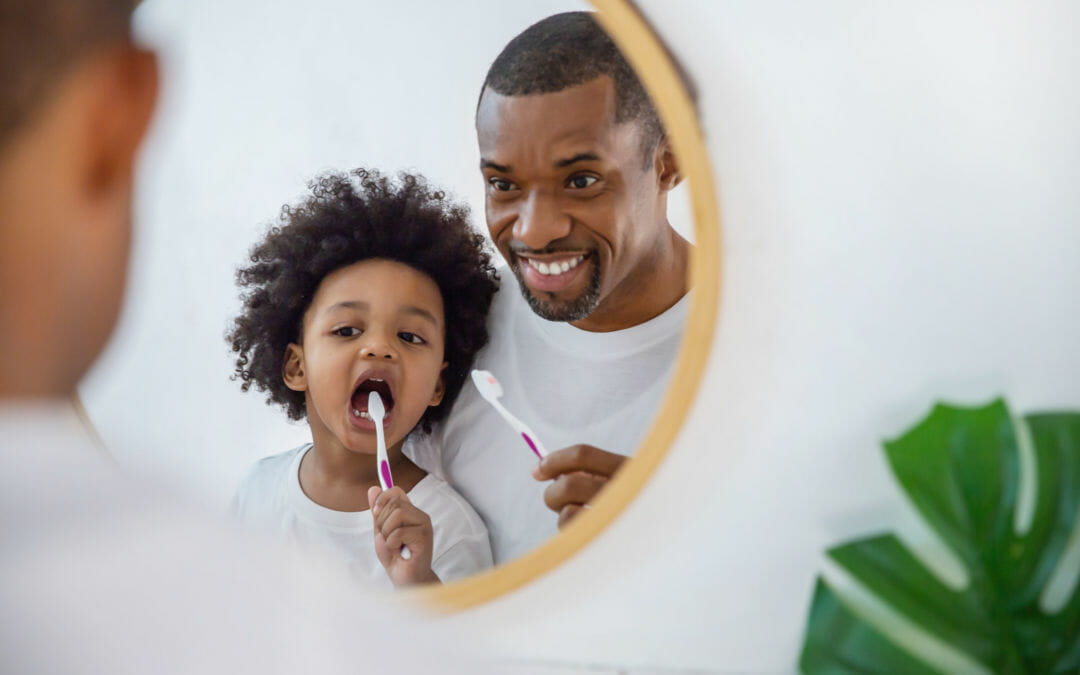We all learned how to brush our teeth as children. Yet for most of us, that education in dental care happened decades ago. Have you brushed up on your tooth brushing skills since then? If not, there’s a good chance you might be missing out on some simple techniques to bust plaque.
For a brighter and whiter smile, not to mention stronger teeth, you need the right brushing technique. You’ll also need to use the right kind of brush and toothpaste, although nothing particularly fancy is necessary. Here’s how to brush your teeth properly so you’ll get praised for your thoroughness during your next dentist visit.
Set Aside Time Twice a Day
It’s easy to make excuses that brushing before bed is enough as an adult. But without that second round of brushing in the morning or middle of the day, your teeth are exposed to much more acid and bacteria than they can handle. Breaking down those plaque and bacteria levels at least twice a day stops them from hardening into tartar and causing cavities respectively. Make sure you’re brushing for a full two minutes each time.
Get a Good Brush
Many people unconsciously avoid brushing their teeth because they’re using a manual toothbrush that is uncomfortable to them in some way. First, always buy soft bristles. Medium to firm bristles are too damaging to the tooth surface and make gums sore, discouraging you from brushing over the gum line enough to remove plaque.
Pay attention to the shape of the head and any additional features like sweepers or extensions on the bristles. Large heads and extra long bristles can trigger your gag reflex or just feel uncomfortable if you’re sensitive. Try a few toothbrushes until you find one that feels natural and non-invasive in your mouth. Electric toothbrushes tend to have smaller head sizes which can work well, but you’ll need to pay extra attention when using one to make sure you’re reaching every tooth.
Use a Fluoride Toothpaste
Despite the fear mongering, there’s no evidence that a normal dose of fluoride even on a daily basis will have any negative effects on you. In fact, not getting enough fluoride through your diet leaves your teeth at serious risk. The amount of fluoride in any ADA-approved toothpaste is more than safe enough while still providing a small dose for tooth health and enamel strength. Use any ADA-approved toothpaste you like, but avoid products with activated charcoal and other abrasive materials since they tend to damage while they’re whitening.
Check Your Brush Technique
You likely know all of the above, even if you needed a reminder. But do you know the perfect angle for brushing or the movements you should use to move over every tooth? In order to get good contact with every surface on a curved tooth, you want to keep the brush at a 45-degree angle to the teeth. Most people use a 90 degree angle that places the bristles flat against the tooth surface. This minimizes gum tissue stimulation and can be uncomfortable. Of course, this isn’t always easy when brushing the back of the teeth, but do your best. Each time you sweep the brush over the teeth, use a circular motion rather than back and forth. Aim to brush just three to four teeth at a time, on one surface at a time, to really focus on getting them clean.
Start by brushing the outer edges of the top and bottom teeth, then the flat chewing surfaces of the molars. Work your way to the inside edges of the back teeth, then focus on the backs of the front top and bottom incisors. This should ensure you don’t miss a spot.
Brush Your Tongue
Trying to banish bad breath? Brushing well and flossing is important, but you should also brush your tongue for the freshest breath. Use the same toothbrush if it’s a manual model or pick up an inexpensive toothbrush just for that purpose if you use an electric brush for your teeth. Gently brushing the surface from the back to the front with no toothpaste for just 30 seconds, then rinsing, will reduce bad breath significantly.
Rinse Well
You don’t necessarily need mouthwash to finish brushing, although you should use any special mouthwash prescribed by the dentist. Plain water is fine for rinsing out after brushing to work food particles free and clean out gum tissue. 10 seconds of vigorous gargling is fine to finish up the brushing experience. Rinse the brush well and let it dry between uses to sanitize it. If you replace your brush or its head every three to four months as recommended, no further cleaning should be needed.
Now that you’ve got a new commitment to oral hygiene, don’t forget to follow up with an appointment here at Eastgate Dental Excellence. Professional cleanings twice a year will keep your smile healthy and happy along with your brushing habits.

